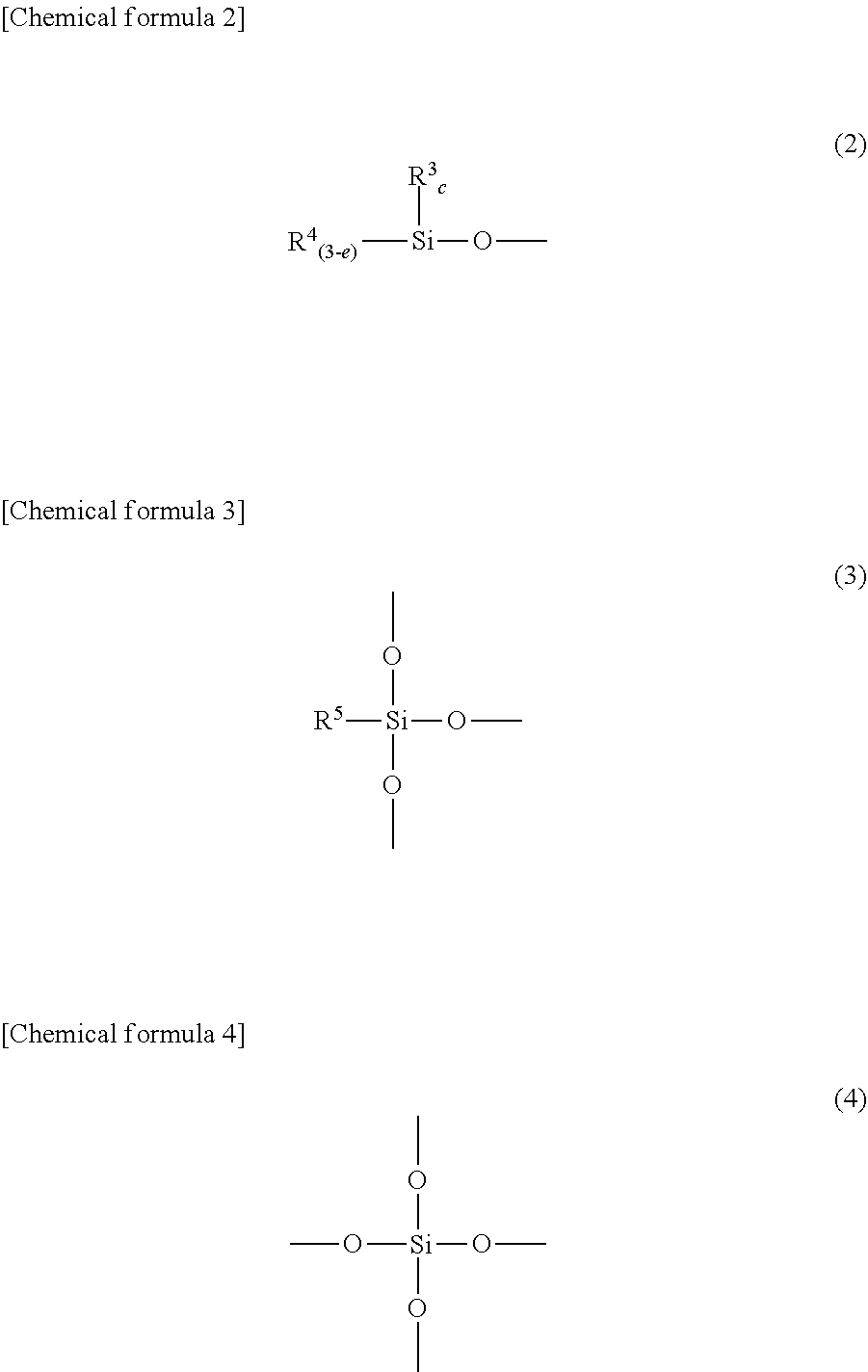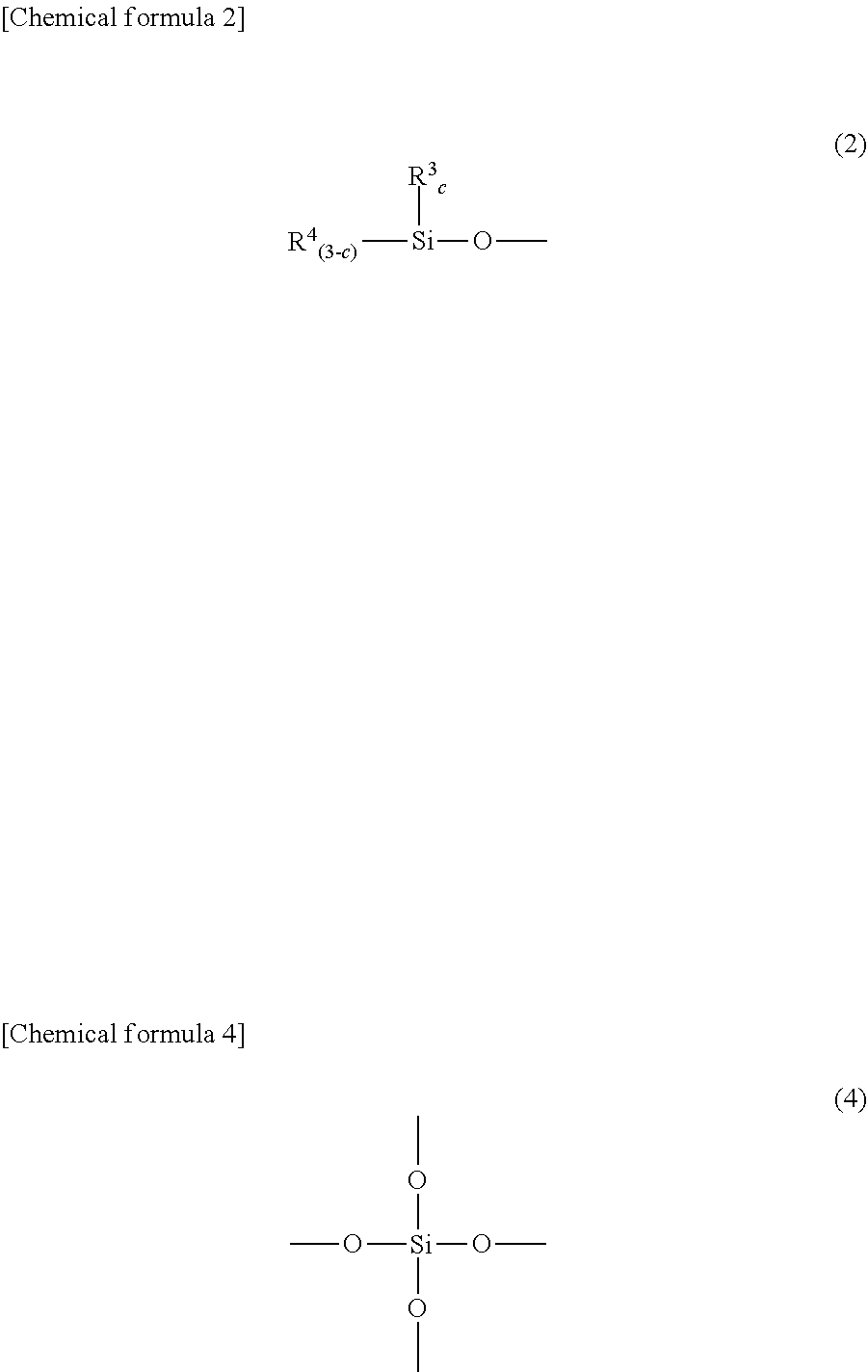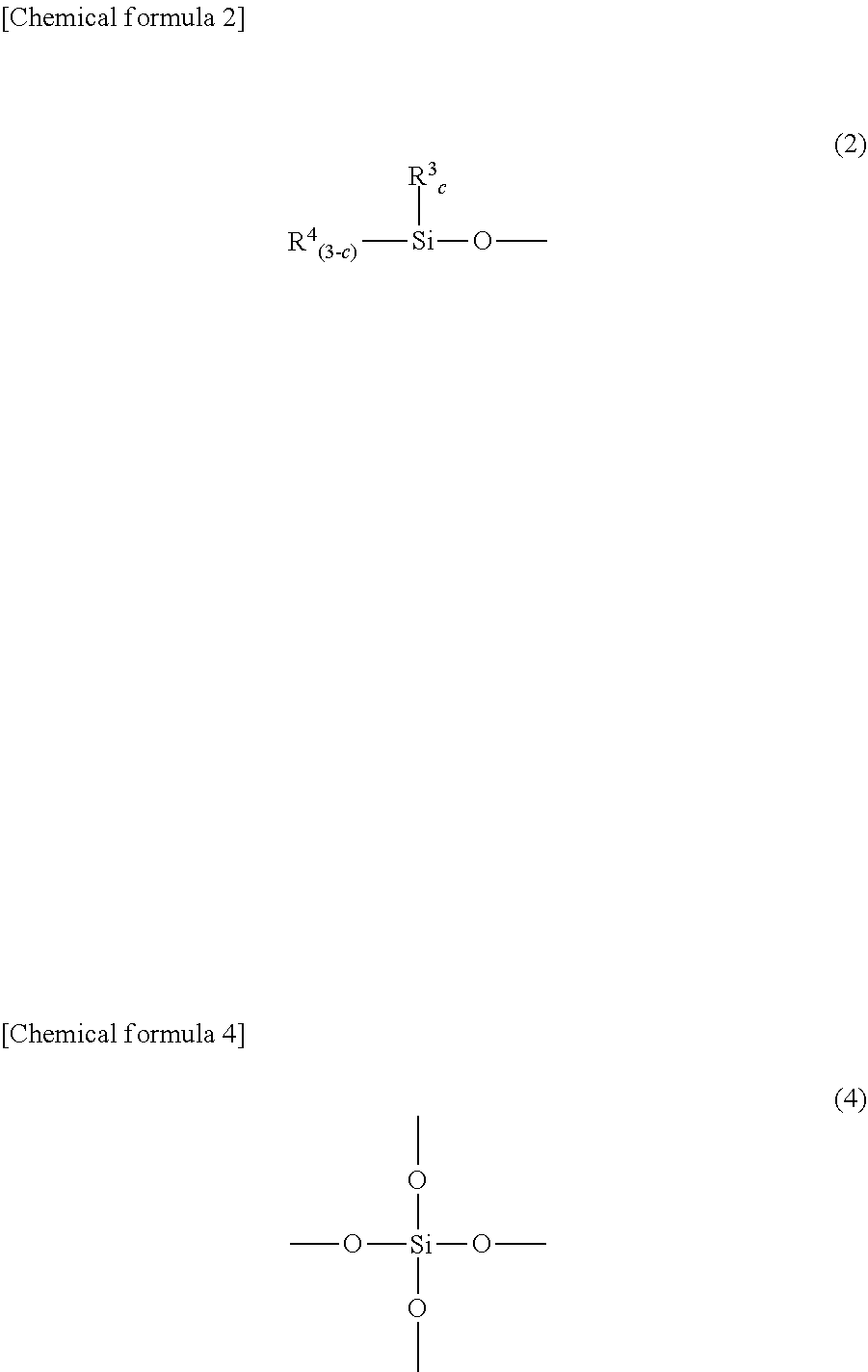Oil-in-water silicone emulsion composition for release film, release film and method for producing release film, and method for adjusting coating properties and release properties of release film
a technology of silicone emulsion and release film, which is applied in the direction of film/foil adhesives, coatings, adhesives, etc., can solve the problems of affecting the reproducibility of release agents, and affecting the application of materials, so as to achieve easy production, reduce the effect of environmental influence and good reproducibility
- Summary
- Abstract
- Description
- Claims
- Application Information
AI Technical Summary
Benefits of technology
Problems solved by technology
Method used
Image
Examples
example 1
[0147]Thirty four parts by mass of an organopolysiloxane having an M unit and a Q unit as the component (A), 6.0 parts by mass of an organopolysiloxane having an M unit and a D unit as the component (A), 7.4 parts by mass of an organopolysiloxane having an SiH group as the component (B), 3.4 parts by mass of a nonionic surfactant as the component (C), 0.0025 parts by mass of a platinum catalyst as the component (D), 11 parts by mass of an organic solvent as an optional component, and a balance of purified water as the component (E) were used to prepare 100 parts by mass of an emulsion.
[0148]The components (A) and (D) were mechanically emulsified with the component (C), to prepare an emulsion. Separately, the component (B) was mechanically emulsified with the component (C), to prepare an emulsion. After that, the emulsions were mixed and an addition reaction was caused to take place, thereby obtaining an emulsion in which a silicone cured product obtained by curing the component (A) ...
example 2
[0154]Twenty nine parts by mass of an organopolysiloxane having an M unit and a Q unit as the component (A), 12 parts by mass of an organopolysiloxane having an M unit and a D unit as the component (A), 6.7 parts by mass of an organopolysiloxane having an SiH group as the component (B), 3.7 parts by mass of a nonionic surfactant as the component (C), 0.0025 parts by mass of a platinum catalyst as the component (D), 9.1 parts by mass of an organic solvent as an optional component, and a balance of purified water as the component (E) were used to prepare 100 parts by mass of an emulsion in the same method as that in Example 1.
[0155]In the component (A), the content of the M unit was 30% by mole, and the content of the Q unit was 34% by mole. The content of the methyl group in the solid content of the whole composition was 16% by mass.
[0156]In the component (A), the molar ratio M / Q was 0.88, and the molar ratio T / Q was 0.
[0157]The ratio B / A of the number by mole of the SiH group in the...
example 3
[0159]Cohydrolysis was performed in an aqueous hydrochloric acid solution in a reaction container using vinyltrimethoxysilane, tetraethoxysilane, trimethylethoxysilane, and vinylmethyldimethoxysilane. The obtained solid substance was taken out, and water, methanol, and ethanol were sufficiently removed to obtain a solid content. This solid content was used as the component (A).
[0160]The aforementioned solid content was weighed so that 40 parts by mass of the total amount of respective silanes as the raw material of the component (A) was used. The weighed solid content, 7.4 parts by mass of an organopolysiloxane having an SiH group as the component (B), 3.4 parts by mass of a nonionic surfactant as the component (C), 0.0025 parts by mass of a platinum catalyst as the component (D), 11 parts by mass of an organic solvent as an optional component, and a balance of purified water as the component (E) were used to prepare 100 parts by mass of an emulsion in the same method as that in Exa...
PUM
| Property | Measurement | Unit |
|---|---|---|
| Percent by mass | aaaaa | aaaaa |
| Percent by mass | aaaaa | aaaaa |
| Percent by mass | aaaaa | aaaaa |
Abstract
Description
Claims
Application Information
 Login to View More
Login to View More - R&D
- Intellectual Property
- Life Sciences
- Materials
- Tech Scout
- Unparalleled Data Quality
- Higher Quality Content
- 60% Fewer Hallucinations
Browse by: Latest US Patents, China's latest patents, Technical Efficacy Thesaurus, Application Domain, Technology Topic, Popular Technical Reports.
© 2025 PatSnap. All rights reserved.Legal|Privacy policy|Modern Slavery Act Transparency Statement|Sitemap|About US| Contact US: help@patsnap.com



